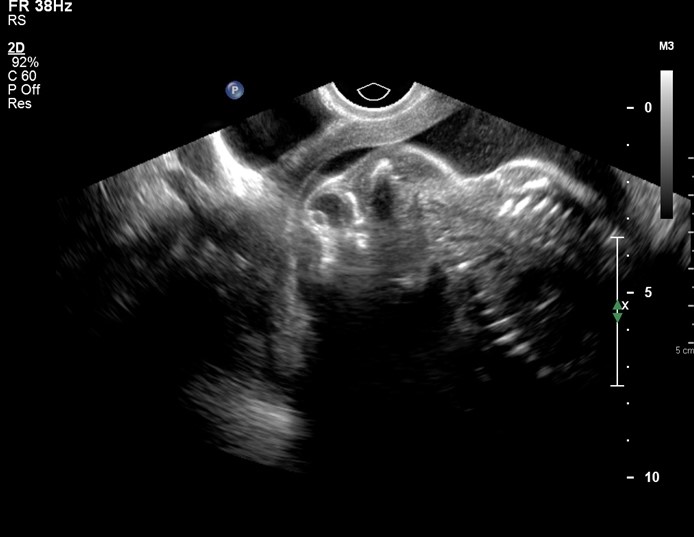A 21-year-old woman, gravida 1 para 0, at 20 weeks gestation comes to the office for a fetal anatomy ultrasound. Her initial prenatal visit was last week, and she has had no vaginal bleeding, contractions, or leakage of fluid. The patient had not realized she was pregnant because her menses are irregular, typically occurring only once every 2 or 3 months. She has no known medical conditions and takes no medications. Blood pressure is 146/98 mm Hg and pulse is 88/min. BMI is 30 kg/m2. Ultrasound shows a large defect in the calvaria and meninges, with only a small cerebellum and brainstem, as seen in the image below.  The remainder of the fetal anatomy appears normal. Amniotic fluid volume measures 26 cm (normal: <24 cm) . Which of the following maternal factors is most commonly associated with this fetal anomaly?
The remainder of the fetal anatomy appears normal. Amniotic fluid volume measures 26 cm (normal: <24 cm) . Which of the following maternal factors is most commonly associated with this fetal anomaly?
Definitions:
Synesthesia
A phenomenon where a single sense is experienced as though it were being perceived by multiple senses, for example, visualizing sounds.
Clairvoyance
The supposed ability to gain information about an object, person, location, or physical event through extrasensory perception, beyond the known human senses.
Precognition
The knowledge of an event before it happens, often considered as a type of extrasensory perception.
Telepathy
The alleged exchange of information between individuals without utilizing any established human senses or physical interaction.
Q14: <strong>Doorway information about patient</strong><br>The patient is a
Q24: <strong>Doorway information about patient</strong><br>The patient is a
Q133: A 24-year-old primigravid woman at 10 weeks
Q166: A 32-year-old woman comes to the office
Q244: An ultrasound confirms an anterior placenta covering
Q330: A 19-year-old woman comes to the emergency
Q398: A 27-year-old man is brought to the
Q409: A 35-year-old woman, gravida 1 para 0,
Q463: A 29-year-old woman, gravida 2 para 1,
Q528: A 22-year-old woman comes to the office